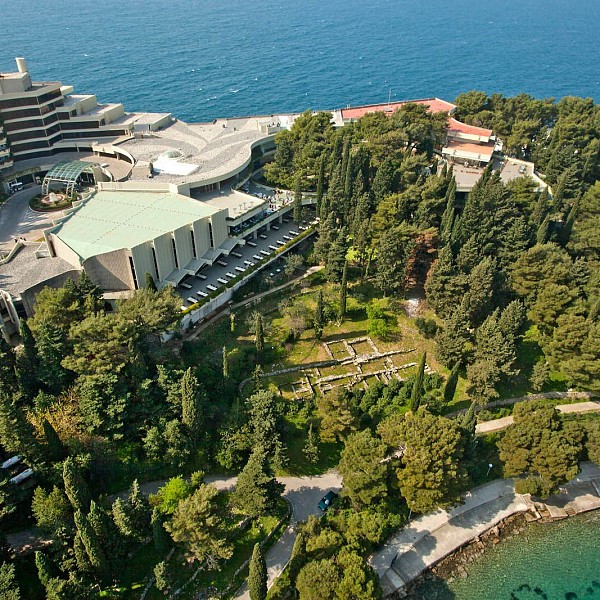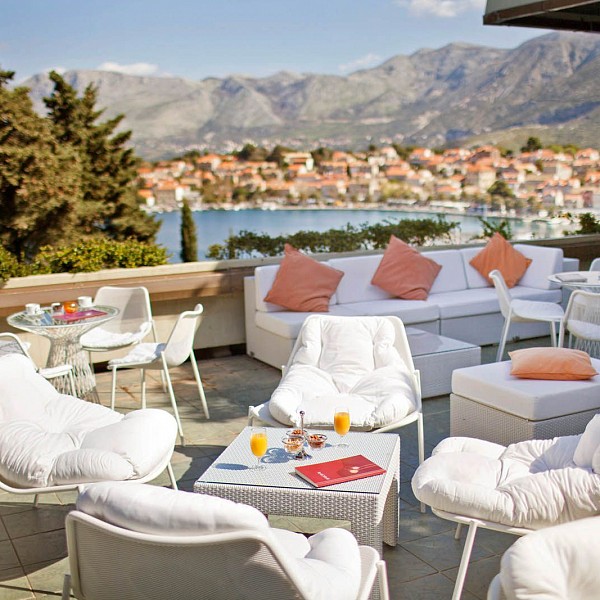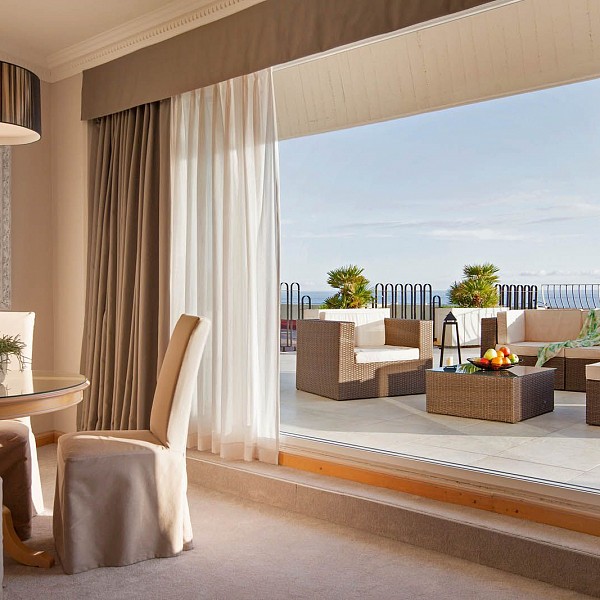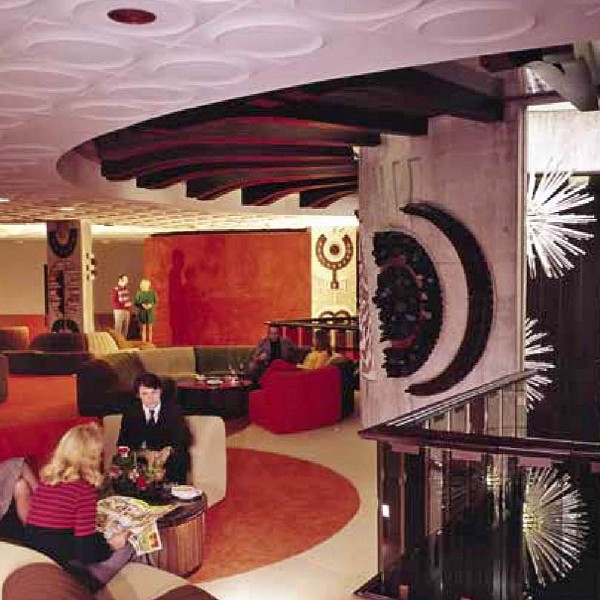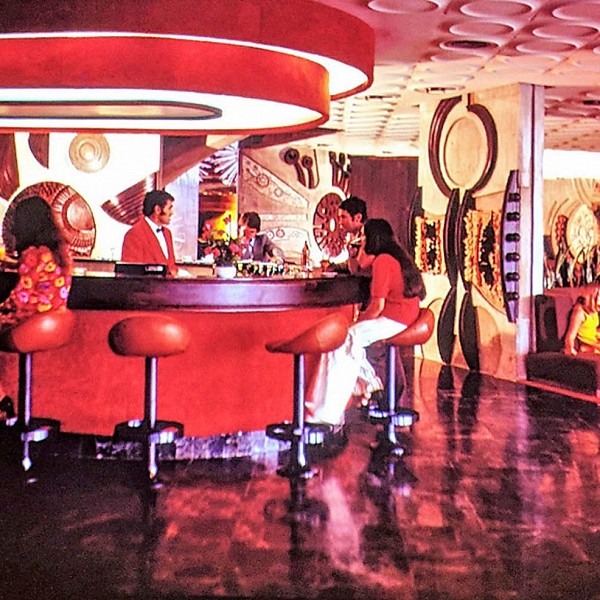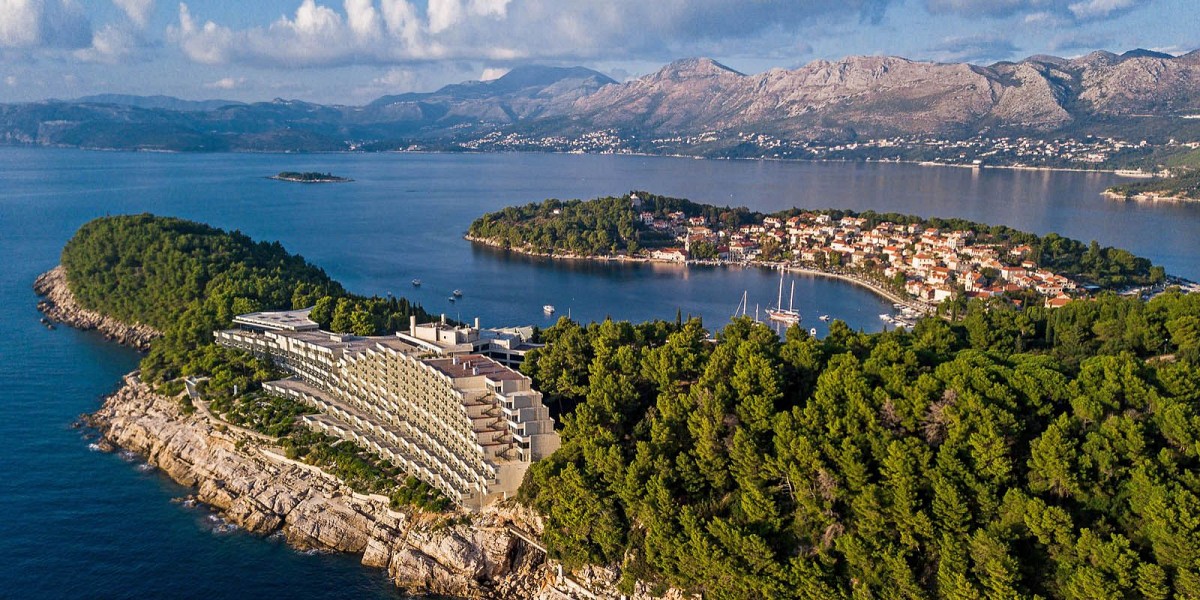
This year Hotel Croatia in Cavtat celebrates its 50th birthday. Half a century has passed since the construction of this magnificent hotel complex, which architect Slobodan Miličević ingeniously incorporated into the wooded hill above Cavtat. Even today, despite numerous modifications over five decades, this massive hotel does not disturb the harmony of the Mediterranean landscape of Konavle and Cavtat, which was the original idea.
Although Hotel Croatia is a massive concrete complex, all of its almost five hundred rooms are hidden from view from Cavtat towards the open sea because it is located on a cliff that dramatically plunges into the blue Adriatic on the outer side. And there, on the cliff, its concrete megastructure resembles a huge cruise ship, a visual echo of the ships that sail next to it today. Public spaces are terraced through the woods so that a view of the picturesque Cavtat bay and the delicate ambience of the rich urban tradition extends from most parts of the hotel.
In the whole building there are almost no sharp or right angles. The walls are made of wavy, organic lines in order to emphasize the impression of drawing nature even more into the interior.
All ten floors have rooms and apartments overlooking the sea and spacious balconies with greenery. The hotel reception is still practical today – spacious, decorated with unique mosaics and concrete reliefs so that they do not disturb the view that extends beyond the reception area to the open sea.
Architectural historians single out Miličević’s Cavtat Hotel Croatia as one of the bravest and most ambitious of the modernist hotels on the Croatian Adriatic coast, to which was dedicated the big exhibition in the year 2018, Toward a Concrete Utopia: Architecture in Yugoslavia, 1948–1980, held in the famous Museum of Modern Art in New York City.
Hotel Croatia was built between 1971 and 1973 during the Communist regime in the former Yugoslavia, and is an ode to concrete brutalism, like many other modernist buildings built at that time. However, its architecture achieved what today’s investors, driven solely by profit and tourism trends, would never achieve. With its position and integration into the environment, Hotel Croatia has achieved complete connection with the local community from the first day of operation.
Entertainment facilities are located on the upper floors and by the sea with restaurants and bars, from where the views open towards Cavtat and the more distant Dubrovnik, while public and semi-public facilities are open to the town and residents. From the first day, the hotel employed local people, and throughout the year the hotel was also a place for their social gathering. The hotel also had its own housing for the young skilled employees who came to work in Cavtat from other areas. There they learned what it was like to work in a high-class hotel. Hotel Croatia, which has been owned by the Lukšić Group since 2001, constituted a true training ground for the highest quality staff for all hotels that later opened in the Dubrovnik area.
The hotel fulfilled many public functions for the community, providing facilities from sports, gastronomy, and entertainment, to casinos and nightclubs. Hotel Croatia was a place that, with equal professionalism and the highest standards, hosted both presidents of states and large international delegations, congresses, as well as events for children, school choirs, wedding ceremonies and celebrations of local newlyweds, New Year’s Eve parties, the once popular Cavtat Carnival Fest that gathered numerous celebrities from the area of the former Yugoslavia.
Hotel Croatia was and remains part of the collective consciousness of the people of Konavle, with an indelible role in the dynamics of the lives of its employees and the local community. The first and long-time hotel general manager Frano Tomšić still vividly remembers how, as a young, newly graduated economist, he came to manage the hotel while still under construction, whose working name was Cypresses: “The architect Miličević and the Energoprojekt company, at that time the largest construction company in Yugoslavia, with two hundred engineers, impressed me with the way they approached the local terrain and the construction of the hotel, which was among the largest hotels in Croatia. When it was completed, the Association of Architects of the Mediterranean declared it the most beautiful hotel in the Mediterranean.”
It was Tomšić who gave the hotel the name Hotel Croatia. However, the Communist regime, which tried to suppress every form of national pride and create a new Yugoslav socialist supranational identity, did not like that at all.
“It took courage, but I was thinking, what suits such a large building, the most beautiful in the Mediterranean? Only a big and beautiful name like Croatia! I was proud that the name was accepted. But, on the other hand, this name stopped further financing of the construction of the hotel, which at that moment was 40% complete. It was only thanks to the international loan of the Yugoslav Investment Bank that we completed the hotel with numerous inconveniences caused by the Communist authorities,” says Tomšić, who twice organized and introduced this massive hotel to the market, fifty years ago and thirty years ago, renovating it after the Homeland War: “As the Director, I was the organizer of the work, the principal holder of the hotel work program, but the value was lodged in the people who selflessly worked and exerted themselves for every guest, reception, every banquet,” he said.
By: Maja Rilović Koprivec


